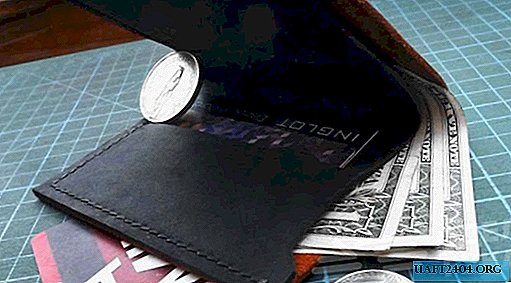Share
Pin
Tweet
Send
Share
Send

Case Dimensions
Before you begin to work, you must determine the size of your case. Does it depend on what you want to put there? To do this, you need to measure the thing that you are going to store in it, but it is better to make the case a few centimeters larger so that this thing fits easily in width, length and height. For example, the size of the flute is 45x3x3 cm. Therefore, the internal size of the case will be 50x6x3 cm.
Material
Now that you know the dimensions, you need to pick up wood. Any type of wood may well be suitable for the manufacture of cases, but the most suitable and aesthetic are solid types of wood (oak, beech, ash). In this example, an ash tree with a beautiful texture is used in the illustration.

Manufacture
Prepare slats of the required length. You can adjust the length by cutting off unnecessary with an electric jigsaw. In our example, the internal size of the case is 50x6x5 cm. Since the case consists of two parts (the lower part, where the flute and the lid will lie), in order to get a total height of 5 cm, you need to make the lower part 3 cm high and the lid 2 cm high. All slats must be glued with PVA glue, and pulled together for several hours with clamps. After the glue has dried, you can begin to polish the wood.




In order to grind hardwood, it is best to use a grinder with a rough skin. It is more convenient to grind some places manually. It is necessary to grind until you get even and smooth all the walls of the case.


Further, for aesthetics, you can round the corners of the case using a hand mill. The top cover of the case can be passed with a milling cutter from all sides, and the bottom cover is only in the middle, making a kind of legs. This will add some delicacy to your packaging.



Then you can start painting the case. To tint wood, stain is used. Before you buy a stain, think about what kind of wood you want to get? As a rule, the labels of cans of stains illustrate the tone of the tree, which is obtained from this painting.


Using a brush, apply stain to the wood. Then, to protect the tree from moisture and other negative influences, cover the case with varnish. It is best to apply several layers. You can use glossy varnish, which will add shine to the wood.


When the varnish dries, you can attach the accessories. It’s better to attach the loops first. To do this, retreat an equal distance from the edges, (in this case 5 cm), and use a drill to drill holes for looped screws, then tighten them with a screwdriver.


It is best to drill holes, as if you immediately start twisting the screw, the wood may crack. Then fasten the lock of the case on the front exactly in the middle.

Most often, such locks are mounted on nails, which are sold in the kit. Nails can be hammered with a small hammer. It will also be practical if you put a stopper inside, which will keep the top cover in the required mode.

Thanks to the limiters, the top cover will not over roll too much, and at the same time it will not hit your fingers.
Now you can proceed to the interior decoration of the fabric. In this case, it is better to use velvet or velor as the material. You can choose the color of the fabric to your taste. Measure the pieces of foam to stick them to the bottom and top of the case.

Then, cover the foam with a cloth, wrapping it under the foam. You can glue the fabric to the foam rubber from below using the Dragon adhesive.


Thus, both the lower and upper surfaces will be soft, due to which they will be able to hold the flute, and be for it a kind of protection against shock and damage.



So, according to this model, you can make a packaging case for almost any item. In such a case, any thing will look expensive and prestigious.
Share
Pin
Tweet
Send
Share
Send











